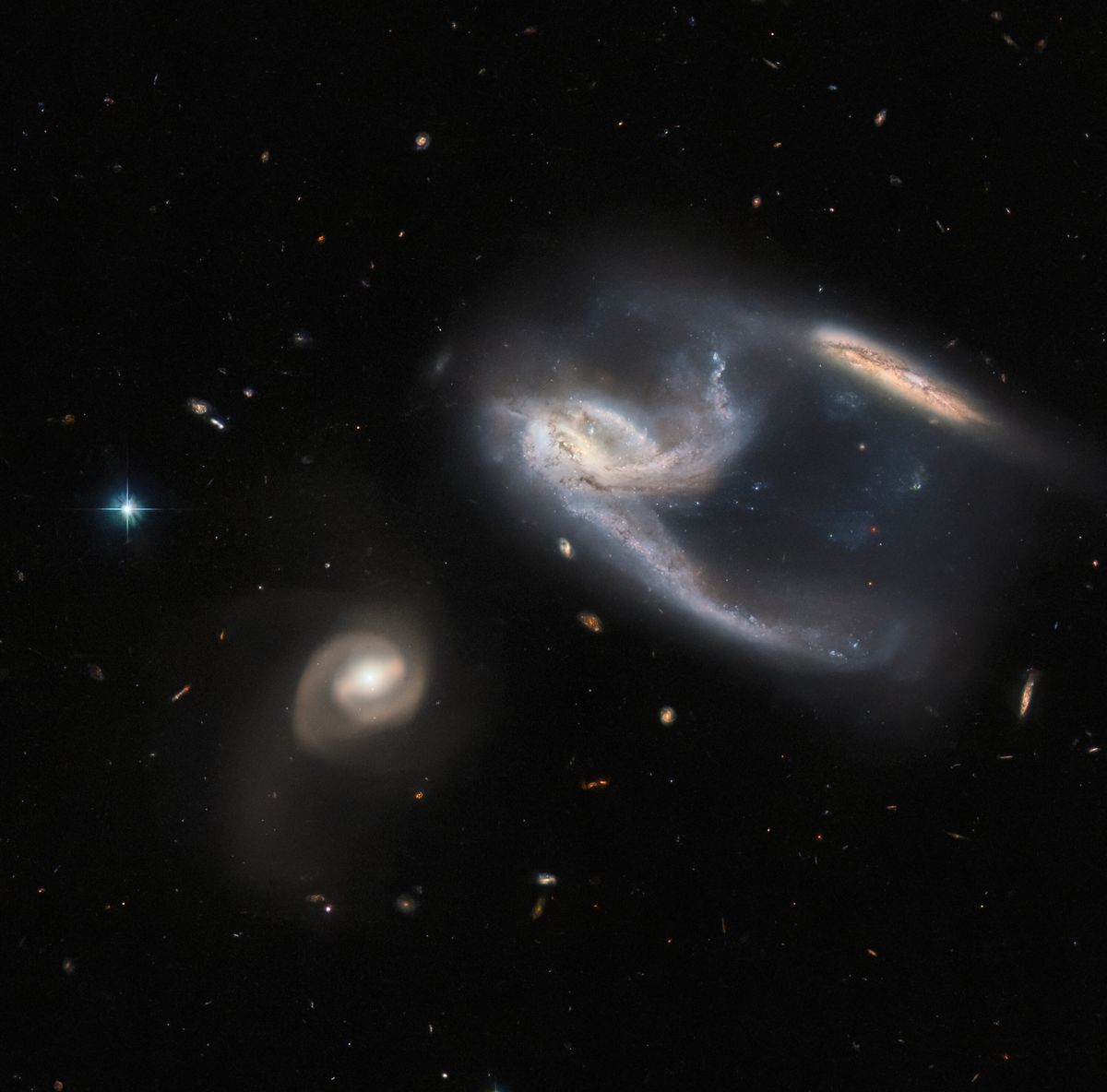Óriási csillaghajót fényképeztek az űrben


A galaxiscsoportot - amelynek neve NGC 7764A - tulajdonképpen három galaxis, az NGC 7764A1, az NGC 7764A2 és az NGC 7764A3 alkotja. A formáció tőlünk 425 millió fényévre, a Főnix csillagképben található – írja a NASA közleménye.
A kép jobb felső részén látható két csillagváros interakcióba lép egymással. A belőlük kinyúló, főként csillagok és gázok alkotta sávok miatt a képződmény a Star Trek sorozatból ismerős USS Enterprise csillaghajóra emlékeztet. A két galaxis vélhetően hatalmas sebességgel ütközött egymásnak. Az ilyen kozmikus karambolok rendkívül ritkák az univerzumban.
Nem világos, hogy a felvétel bal alsó részén látható galaxis hatással van-e a másik kettőre, de közelsége miatt valószínűleg igen.












